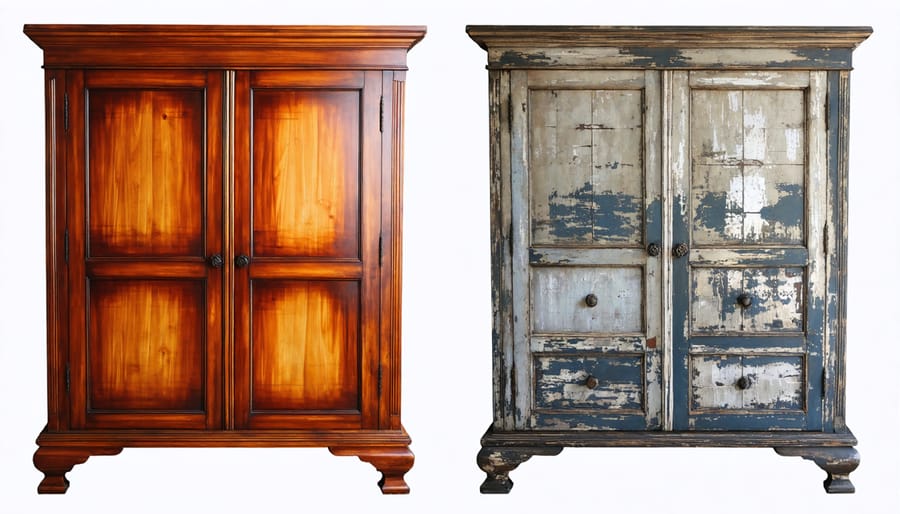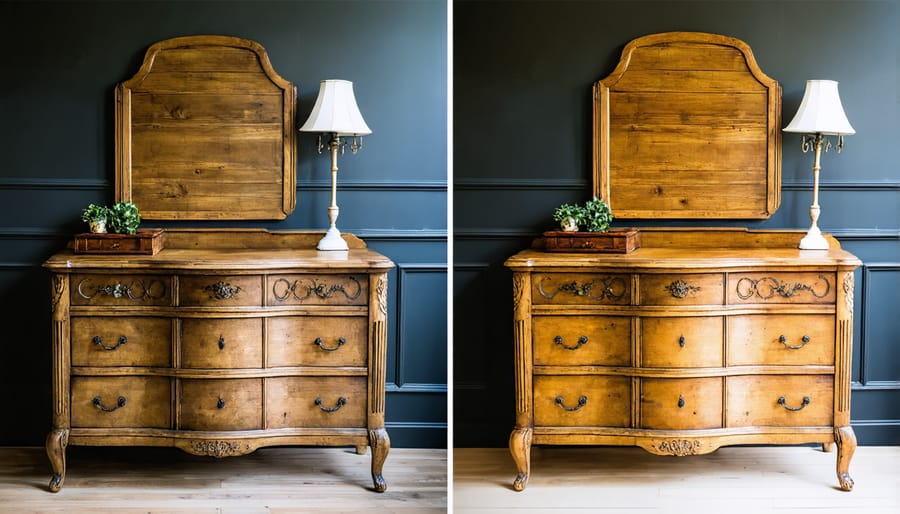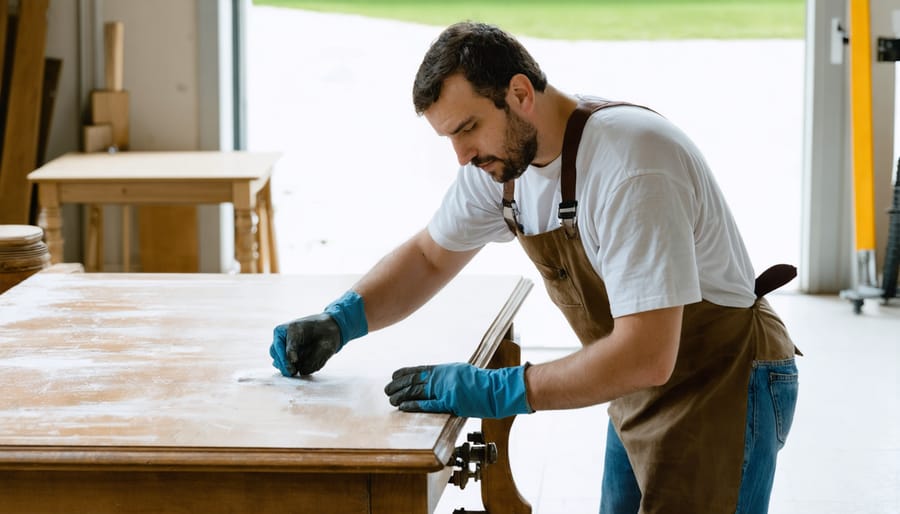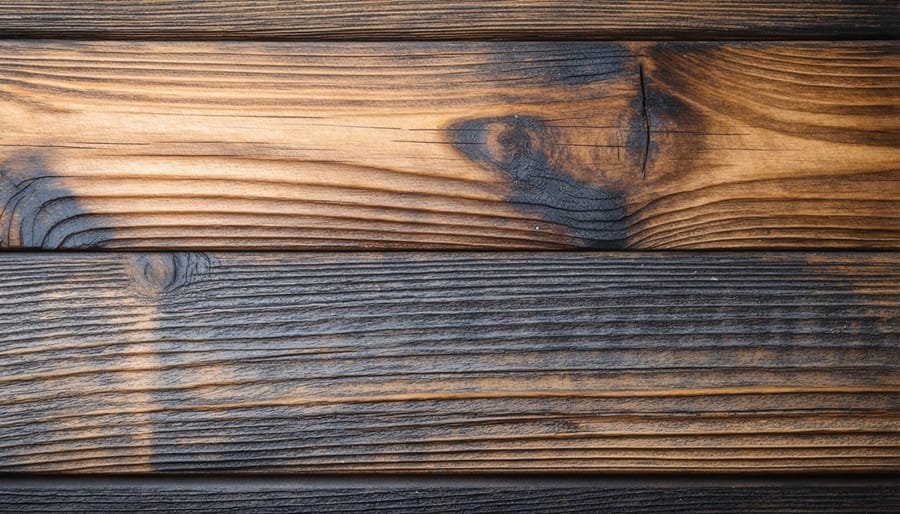
Transform cherished wooden furniture into stunning showpieces through professional restoration, a meticulous process that breathes new life into damaged, worn, or aging pieces. Master craftsmen combine time-tested techniques with modern preservation methods to repair structural damage, restore original finishes, and ensure decades more of functional beauty. The art of preserving antique furniture requires deep expertise in wood species, historical construction methods, and period-appropriate restoration materials. Whether salvaging a family heirloom or investing in valuable antiques, professional restoration delivers lasting results that enhance both the aesthetic appeal and market value of wooden furniture pieces. From Victorian armoires to mid-century modern credenzas, skilled restoration work protects these functional pieces of history while maintaining their authentic character and structural integrity for future generations.
Wooden furniture often shows clear signs when it needs professional restoration. Water damage typically appears as dark rings or white cloudy marks on surfaces, while sun exposure can cause noticeable fading or discoloration. Structural issues might present as wobbly legs, loose joints, or visible gaps in wood connections.
Check for deep scratches, gouges, or chips in the wood surface that go beyond simple wear. Peeling or bubbling veneer is another critical indicator, often resulting from moisture exposure or age. Pay attention to any cracking sounds when moving the furniture, as this could signal weakened joints or structural compromise.
The finish itself may show signs of deterioration through a cloudy or dull appearance, crazing (fine cracks in the finish), or areas where the protective coating has worn away completely. Insect damage presents as small holes in the wood, often accompanied by fine sawdust-like material.
A musty odor or visible mold growth indicates moisture problems that require immediate attention. When these signs appear, professional restoration can help prevent further degradation and restore your furniture’s beauty and functionality.

Before investing in wooden furniture restoration, it’s crucial to assess whether the piece warrants the time and expense. Start by examining the furniture’s current market value, historical significance, and sentimental worth. Quality antiques or well-crafted pieces from renowned manufacturers typically justify restoration costs, as their value often appreciates post-restoration.
Consider the extent of damage and required repairs. Minor issues like surface scratches, loose joints, or worn finish might cost between $200-500 to restore, while major structural repairs or extensive damage could exceed $1,000. Compare these costs against the price of similar pieces in good condition.
Personal attachment plays a significant role. Family heirlooms or pieces with emotional value often merit restoration regardless of market worth. However, mass-produced furniture from recent decades may be more economical to replace than restore.
Key factors to evaluate include the wood quality, construction method, and overall craftsmanship. Solid hardwood pieces with mortise-and-tenon or dovetail joints are typically worth restoring, while particleboard or veneer furniture might not justify the investment. When in doubt, consult a professional restorer for an expert assessment of the piece’s restoration potential.
Professional furniture restoration begins with a thorough assessment of the piece’s condition, history, and value. Our experts carefully examine every aspect of the furniture, from its construction methods to the types of wood used, looking for signs of damage, previous repairs, and potential challenges.
During this initial evaluation, we document existing conditions through detailed photographs and notes, paying special attention to structural integrity, surface damage, and any unique characteristics that require particular care. This includes checking for loose joints, water damage, insect infestation, and the stability of existing finishes.
We then develop a comprehensive restoration plan tailored to each piece. This plan outlines the specific techniques and materials needed, estimated timeline, and potential challenges. For antique pieces, we consider historical accuracy and preservation of original elements whenever possible.
The assessment also includes determining appropriate restoration methods that balance the furniture’s intended use with its historical value. For family heirlooms, we might recommend more conservative approaches that preserve patina and character, while commercial pieces might require more extensive restoration for durability.
Our experts discuss all findings with clients, explaining the recommended procedures in clear terms and addressing any concerns. We provide detailed cost estimates and timeline projections, ensuring complete transparency throughout the planning process. This collaborative approach helps clients make informed decisions about their furniture’s restoration journey.
Successful furniture restoration begins with thorough surface preparation and proper damage assessment. Start with proper surface cleaning techniques to remove accumulated dirt, grime, and old wax buildup. Use a gentle wood cleaner and soft cloths to avoid scratching the surface.
For pieces with existing finishes that need removal, chemical strippers or manual sanding may be necessary. When using chemical strippers, work in a well-ventilated area and follow manufacturer guidelines carefully. For manual stripping, start with medium-grit sandpaper (120-150) and progressively move to finer grits (220-320) for a smooth finish.
Address structural issues before refinishing. Fill small holes and cracks with wood putty matched to your furniture’s color. For larger damages, consider wood patches or Dutchman repairs, where damaged sections are carefully cut out and replaced with matching wood pieces. Loose joints should be reglued using quality wood glue, ensuring proper clamping during the drying process.
Pay special attention to veneer repairs, as these delicate surfaces require careful handling. Loose veneer can be reattached using contact cement or hide glue, while damaged sections may need replacement with matching veneer pieces. Always test cleaning products and repair techniques on an inconspicuous area first to ensure compatibility with your piece.

The final stage of furniture restoration involves protecting your piece for long-lasting beauty and durability. If you’re aiming to match the original wood tone, select a stain that complements the existing color. Apply the stain evenly using a clean cloth or brush, working in the direction of the wood grain. Allow each coat to dry completely before adding additional layers to achieve your desired depth of color.
Once you’re satisfied with the color, it’s crucial to seal and protect the wood. A quality clear coat finish not only enhances the wood’s natural beauty but also provides essential protection against moisture, UV rays, and daily wear. Popular options include polyurethane, lacquer, or traditional shellac, each offering different levels of protection and aesthetic appeal.
For maximum durability, apply multiple thin coats rather than one thick layer, sanding lightly between applications. This technique ensures a smooth, professional finish without bubbles or brush marks. The final coat should be applied with extra care, as it will be the visible surface of your restored piece.
After the finish has fully cured (typically 24-72 hours), you can enhance the surface with a furniture wax or polish. This additional layer provides a beautiful luster and offers another barrier against daily wear. Remember to maintain your restored piece by dusting regularly and avoiding direct sunlight or extreme temperature changes.

Maintaining your restored wooden furniture requires consistent care to preserve its beauty and extend its lifespan. Start by dusting your pieces regularly with a soft, lint-free cloth to prevent particle buildup that can scratch the surface. When cleaning, avoid harsh chemical cleaners that can damage the finish – instead, opt for eco-friendly furniture care products specifically designed for wood surfaces.
Position your furniture away from direct sunlight and heat sources to prevent fading and warping. Maintain consistent indoor humidity levels between 40-50% to prevent wood from expanding or contracting. Use coasters under drinks and placemats under hot dishes to protect against water rings and heat damage.
Apply a quality furniture polish or conditioning treatment every 3-4 months to nourish the wood and maintain its protective finish. When moving furniture, always lift rather than drag to prevent damage to both the furniture and your floors. Regularly check for loose joints or developing issues, addressing them promptly to prevent more extensive damage.
For pieces with leather or fabric components, vacuum regularly and treat spills immediately. Consider using furniture covers when not in use, especially in rooms with high sunlight exposure. Remember that prevention is always easier and more cost-effective than restoration, so establishing these daily care routines will help maintain your furniture’s restored beauty for years to come.
Environmental factors can significantly impact the longevity and appearance of your wooden furniture. Understanding and controlling these elements is crucial for maintaining restored pieces. Temperature fluctuations and humidity levels are primary concerns, as wood naturally expands and contracts in response to these changes. Maintain indoor humidity between 35-45% using humidifiers or dehumidifiers as needed.
Direct sunlight poses another significant threat, causing fading, discoloration, and potential cracking of wood surfaces. Position furniture away from windows or use UV-protective window films. If relocation isn’t possible, consider using protective covers during peak sunlight hours.
Heat sources like radiators, air vents, and fireplaces can cause wood to dry out and warp. Maintain a safe distance of at least two feet between furniture and these heat sources. Regular monitoring and seasonal furniture maintenance helps prevent environmental damage before it becomes severe.
In areas prone to high moisture, such as basements or coastal regions, use moisture barriers and proper ventilation to protect your furniture. Consider using specialized wood sealants designed for your specific climate conditions. For outdoor wooden furniture, ensure proper drainage and elevation to prevent water accumulation, and store pieces indoors during severe weather conditions.
Choosing the right professional for your wooden furniture restoration project is crucial for achieving the best possible results. Start by researching potential restorers’ qualifications and experience. Look for professionals who have completed formal training in furniture restoration and have at least 5-10 years of hands-on experience with similar pieces to yours.
Request to see their portfolio of previous work, particularly before-and-after photos of projects similar to yours. Pay special attention to pieces from the same era or style as your furniture. A qualified restorer should be able to explain their restoration process in detail and provide references from past clients.
Professional certifications from recognized industry organizations are valuable indicators of expertise. Additionally, ensure the restorer carries appropriate insurance coverage to protect your valuable pieces while in their care.
When meeting with potential restorers, observe their workshop conditions. A well-organized, clean workspace with proper ventilation and specialized tools indicates professionalism and attention to detail. The restorer should ask detailed questions about your piece’s history and your expectations for the restoration.
Get detailed written estimates that outline the scope of work, materials to be used, timeline, and warranty information. Be wary of unusually low quotes, as quality restoration requires proper materials and time-intensive skilled labor. A reputable restorer will be transparent about their processes and pricing structure while demonstrating genuine interest in preserving your furniture’s historical and aesthetic value.
When you entrust your cherished wooden furniture to our restoration experts, you’ll embark on a carefully planned journey to bring your piece back to life. The process typically begins with a thorough assessment, which takes 1-2 days, where our specialists examine the furniture’s condition and document all areas requiring attention.
Following approval of our detailed restoration plan, the actual work usually spans 2-4 weeks, depending on the piece’s complexity and condition. During this time, your furniture undergoes several stages: cleaning and stripping of old finishes (3-5 days), repairs and reconstruction (4-7 days), wood preparation and staining (3-5 days), and finally, finishing and sealing (5-7 days).
Throughout the restoration, you’ll receive weekly progress updates with photos documenting the transformation. Our team maintains open communication channels, ensuring you’re informed about any unexpected discoveries or additional work needed. We understand the sentimental value of your pieces and treat each project with the utmost care and attention.
For pieces requiring extensive restoration, we provide detailed documentation of historical elements and restoration techniques used, helping preserve your furniture’s story for future generations. Upon completion, you’ll receive care instructions and maintenance recommendations to protect your newly restored piece.
We guarantee all our work and offer a final inspection to ensure your complete satisfaction before delivery or pickup.
Professional wooden furniture restoration is an investment in preserving both the monetary and sentimental value of your cherished pieces. With expert knowledge, specialized tools, and time-tested techniques, professional restorers can breathe new life into damaged or worn furniture that might otherwise be lost to time. Don’t let your precious wooden furniture continue to deteriorate when skilled restoration can return it to its former glory. Whether you have a family heirloom that needs attention or a vintage find that requires expert care, taking action now will ensure these pieces remain beautiful and functional for generations to come. Contact a professional furniture restorer today to discuss your project and take the first step toward preserving your wooden furniture’s legacy.